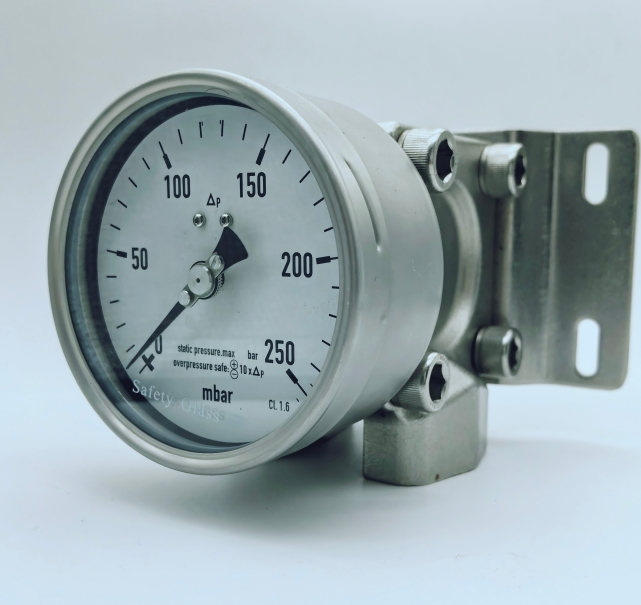A differential pressure gauge is an instrument used to measure the pressure difference between two pressure points, while a high-static-pressure differential pressure gauge is a special type that, based on ordinary differential pressure gauges, has a stronger ability to withstand high static pressure. The following will elaborate on its functions and application scenarios:
Precise measurement of differential pressure values
In environments with high static pressure (such as high baseline pressure in pipelines), it accurately measures the pressure difference between two points without being interfered by the background high pressure. For example, when the static pressure in a pipeline is 10 MPa, it can still precisely detect a tiny differential pressure change of 0.1 kPa.
Protection of instruments and system safety
The high-static-pressure design prevents the instrument from being damaged by excessive static pressure (e.g., diaphragm rupture, housing deformation) and avoids system misjudgments caused by instrument failures (e.g., false alarms of pressure abnormalities).
Adaptation to complex working condition monitoring
Provision of stable data references
Maintains measurement accuracy in high-pressure environments, providing reliable data for process control and equipment maintenance. For instance, it judges whether the pipeline is blocked or the valve opening is appropriate through changes in differential pressure.
Industrial process control
Applications: Monitoring the differential pressure of filters in steam turbine lubrication systems (preventing bearing lubrication failure caused by filter blockage), monitoring the differential pressure at the inlet and outlet of high-pressure boiler water walls (judging the normality of water circulation).
Petrochemical industry
Power industry
Metallurgical industry
Energy and gas transportation
Aerospace and military industries
Scientific research and laboratories
Environmental protection and water treatment
Sewage treatment plants
Seawater desalination systems
Static pressure bearing capacity: Select a model with a static pressure capacity greater than the maximum system static pressure (usually leaving a 20%–30% safety margin).
Differential pressure range: Ensure that the measured differential pressure value is within 10%–90% of the instrument's range to avoid accuracy degradation caused by excessively large or small ranges.
Medium compatibility: Choose appropriate diaphragm materials (such as 316L stainless steel, Hastelloy) according to the measured medium (e.g., corrosive gases, viscous liquids).
Protection level: In industrial fields, select a protection level of IP65 or above to prevent dust and water vapor from invading and affecting instrument performance.
High-static-pressure differential pressure gauges provide key data support for process optimization, equipment maintenance, and safe operation in various industries by accurately measuring differential pressure in high-pressure environments, making them indispensable measurement tools in high-pressure systems.






